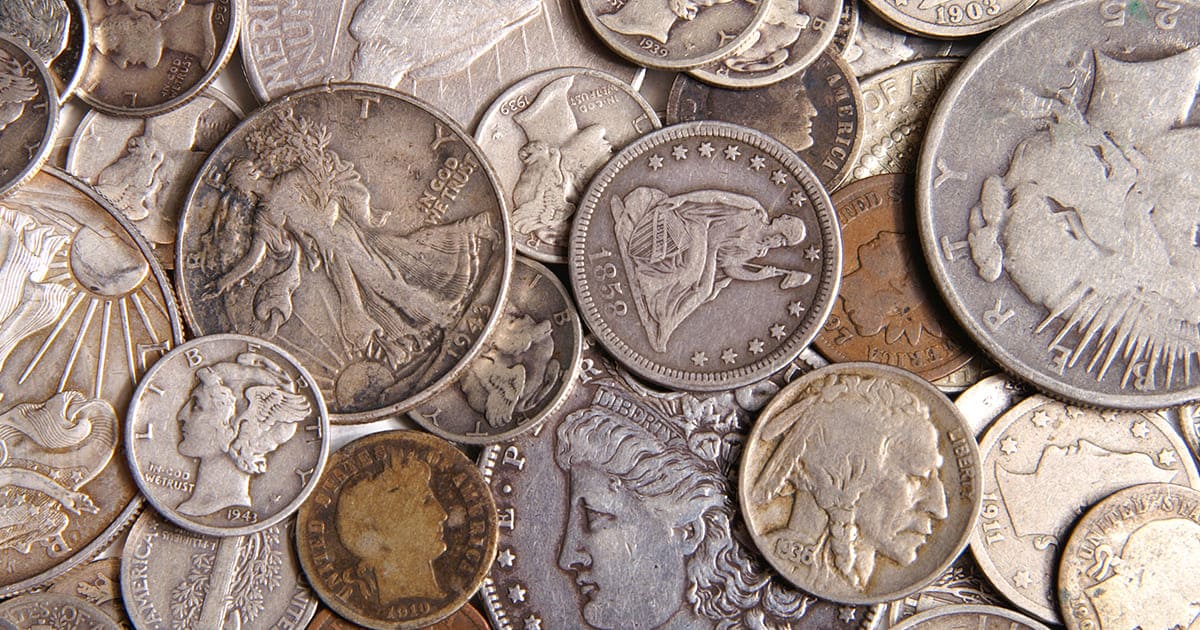
Learn About Five 1792 Washington-Getz Patterns
Much like the Washington Cents of 1791 and 1792, the Getz Patterns were struck by an outside contractor in hopes of establishing themselves as the possible official coinage of the new American Government. These coins, however, were not struck, unsolicited, by a British minter. Robert Morris, head of the United States Senate Committee on coinage hired engraver Peter Getz, of Lancaster, Pennsylvania, to strike some coinage to his specifications.
Getz used the prior 1791 Washington Large and Small Eagle Cents as his models. Since these 1791 coins had already been rejected, Getz felt no compunction about appropriating their designs. Morris instructed Getz to strike prototypes in both copper and in silver and had them available for members of Congress just before a bill offered by Morris would be voted upon. It is believed that Getz struck 30 to 40 silver examples, representing Half Dollar coins, which went to the members of the United States Senate and 100 to 150 copper coins, representing Cents that were distributed to the Congressmen and other governmental luminaries.
The obverse of Getz’s coins displayed a military bust of George Washington, facing left. Around the periphery were the words “WASHINGTON – PRESIDENT. I. – 1792.” He also used the Small and Large Eagles as varieties for Getz’s own prototypes.
The reverse of the Small Eagle version had an eagle, facing left, with spread and upraised wings, 15 five-pointed stars above the eagle, a shield covering the eagle’s breast, and six arrows in the Eagle’s left talon and an olive branch in the Eagle’s right talon. “UNITED STATES OF AMERICA” is inscribed around the periphery.
The Large Eagle version had an eagle, facing left, with the spread but downward wings, a large shield covering the eagle’s breast, thirteen arrows in the Eagle’s left talon and an olive branch in the Eagle’s right talon. “UNITED STATES OF AMERICA” is inscribed around the periphery.





But in late 1791 as these pieces and their English counterparts were rejected by Washington, who, as the new President, did NOT want his portrait on our new currency. Washington felt it was too monarchial and he had just led us in a long and bloody war against a monarchy.
Some additionally believe that Getz may have struck some of his rejected designs in 1795 or beyond, but that number would be extremely limited.
| Date | Type | Mintage | Fine Value | Unc Value |
| 1792 | Small Eagle, Silver Half Dollar | 20-30 | $90,000 | $275,000 |
| 1792 | Small Eagle, Copper Cent | 80-100 | $15,000 | $125,000 |
| 1792 | Small Eagle, Copper Cent, Ornamental Edge | 20-30 | $85,000 | $225,000 |
| 1792 | Small Eagle, Silver Half, Ornamental Edge | 4 Known | $100,000 | $250,000 |
| 1792 | Large Eagle, Silver Half Dollar | 3-6 known | $65,000 | $200,000 |
Expand your collection today and find a 1792 Washington Getz Pattern Cent VF-30 PCGS.




